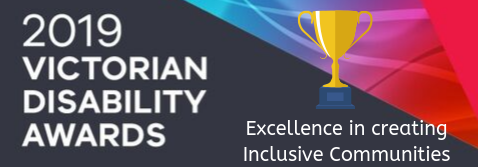All About Mentoring
Some boards and committees may opt to use mentors. All About Mentoring describes a process for establishing a mentoring program. A mentor is typically a veteran board member whose role is to assist a new member to understand their role as a board member. The mentor role is different than that of an individual support person.
So, what is mentoring?
A mentor is an advisor. Someone who has experience, wisdom, and a desire to share it with others. Mentoring involves sharing and learning from each other. It is not a one-way thing.
The purpose of mentoring
Becoming a board member can be a confusing process for most people. Mentoring helps new members of the board have access to the knowledge, skills, and supports they need to be effective participants in all board activities. It also provides the mentor with access to the skills, experience and knowledge of people with disabilities.
How does the board benefit from a mentorship program?
The board benefits by having well-informed members who have the skills and supports they need to be effective participants. The board can also learn fro new members.
Who can be a mentor?
Any experienced member of the board can volunteer to be a mentor. The new board member picks his or her own mentor whenever possible. Another board member may assist with this if needed.
What is the role of a board mentor?
Mentors assist new board members by listening, advising and supporting them. Mentors make sure that new members’ issues come to the attention of the board chair or others as appropriate. Mentors help the member get and understand information that is needed so the member can make informed decisions.
Mentors help new members learn about the board and its activities. Mentors help the new members develop new skills, become active and informed participants and have enriching experiences as board members.
Why would you want to be a mentor?
Mentoring is a relationship that benefits both people through the exchange of information and experience. Sometimes a friendship develops. The mentor receives satisfaction from helping someone develop knowledge and skills and learning from the new member.
What is the commitment of a mentor?
Mentors support the new member through their first full year or until they are comfortable. Mentors and new members will share what’s working and what’s not with the board chair.
Can you have a support person and a mentor?
Some board members may have a support person employed to provide assistance. A support person is familiar with how to provide support specifically for the board member they work for. The mentor provides expertise on the role of being a board member to the person with a disability.
How does mentorship work?
- The board chair or a committee recruits mentors from current board members and suggests matches.
- When the match is made between a mentor and a new member, the mentor makes the first contact to welcome the new member.
- The mentor sets up a meeting with the new member and together they identify supports that may be needed.
- Mentors make sure the new members can get to their first board meeting and receive orientation.
- Mentors regularly scheduled face-to-face meetings are recommended for the first year.
What should the mentor and the new member cover?
- Introduce the new members to the inner workings of the board including:
- how the Board functions;
- who are the current members;
- the current priorities;
- role of staff; role of officers; role of members and
- the culture of the organisation.
- Help the new member learn:
- how to prepare for meetings and discussions;
- meeting skills
- how to identify opportunities to express their opinions and make suggestions;
- Discover the new member’s needs and arrange supports. The needs of each new member are unique. It’s the job of the mentor to discover those needs and provide or arrange for appropriate supports.
How do mentors support new members during meetings?
Mentors support new members during meetings by:
- Sitting with them during meetings and checking in occasionally to see how they are doing.
- Encouraging them to participate and make suggestions.
- Exchanging feedback after meetings.
- Making suggestions to the chair that could help new members participate.
- Encouraging new members to ask questions if they don’t understand.
How will progress be monitored and encouraged?
The chairperson will check in occasionally with the mentor and new members to see how the relationship is working out.
At the end of the first year, the new members will be asked to evaluate what went well, what could be improved, and what is still needed.
Source: Green Mountain Self-Advocates and ARC of Vermont, 2003, GET ON BOARD AND MAKE A DIFFERENCE! Effective Practices for Including People with Developmental Disabilities and New Members on Boards and Committees
Next Page: Chapter 5 – Inclusive Meetings
Chapter 4. Identify and Remove Barriers
Menu: Consumer Participation Kit



